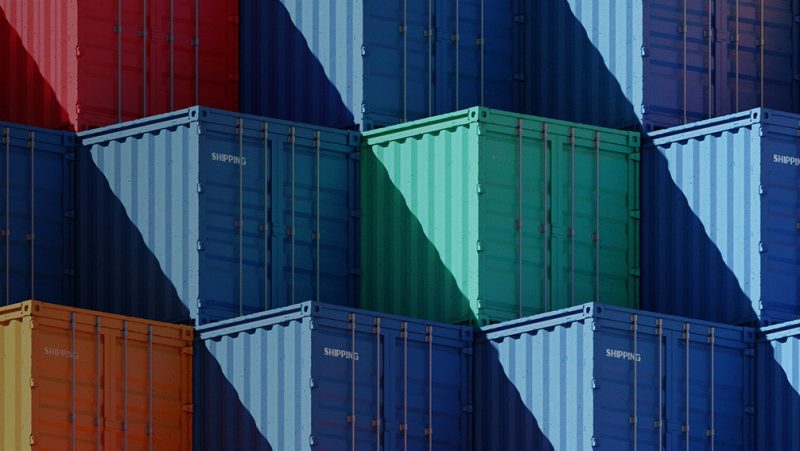by Regina Chi, CFA®, Vice-President and Portfolio Manager, AGF Investments Inc.
As economies increasingly diverge during deglobalization, so will corporate fortunes and investment opportunities.
For much of the past 75 years, the most significant macroeconomic story, to both developed and emerging economies, has been globalization. In the aftermath of the Second World War, liberal policies and global institutions saw trade barriers weaken, and China’s accession to the World Trade Organization in December 2001 – almost exactly two decades ago – accelerated the world economy into a period of hyper-globalization. Aided by new technologies that enabled knowledge dissemination and lowered barriers to entry, the international flow of goods and services increased to a degree never seen before; labour productivity soared.
Globalization promoted economic growth, created jobs, made companies more competitive and lowered prices for consumers, especially in the developed world. It promoted foreign direct investment in Emerging Markets (EM), helping them develop economically, and the combination of strong growth and low inflation allowed central banks to maintain benign monetary policies. Yes, it created inequities and there were crises, but globalization has been a good story for billions of people – including investors.
Now, however, the world is changing. Governments are retrenching into protectionism. China – the most vital link in the modern network of hyper-globalization – has become more assertive and less accommodative to Western priorities. Russia has thumbed its nose at the “new world order” with its invasion of Ukraine, further disrupting global supply chains whose fragility had already been exposed by the pandemic. Given the durability of globalization since World War II, it might be tempting to assume those are short-term trends and the world will get back to “normal” once they end. But there is another possibility: that these are markers of a slow deglobalization that will mean higher inflation and a far less productive world for years to come.
There have been periods of deglobalization in the past, and they are instructive comparators for the current environment. After the First World War and again during the Great Depression, the United States hiked tariffs, prompting its trading partners to implement their own retaliatory levies. In both cases, global trade openness (calculated as exports and imports as a percentage of GDP) declined sharply.
But there is another possibility: that these are markers of a slow deglobalization that will mean higher inflation and a far less productive world for years to come.
Fast-forward to 2018, when we saw tit-for-tat trade wars erupt between the U.S. and Canada, Europe, Japan and China. Notably, the end of the Republican administration in 2020 did not spell the end of the so-called Trump tariffs – the levies against Chinese goods remain in effect, in large part because an anti-China trade stance enjoys bipartisan and popular support in the U.S. China itself has become far more aggressive in its geopolitical positioning, including tacitly backing Russia’s invasion of Ukraine. Meanwhile, the U.S. and China are engaged in an ongoing tech war, in which the U.S. is trying to prevent its adversary from accessing high-tech equipment and intellectual property, including in the form of American citizens.
What is the likely impact of these retrograde policies? Perhaps the most significant to investors will be higher inflation. To understand why, consider the disinflationary effects of globalization. Over the past couple decades, multinational companies could arbitrage tax rates (which fell to all-time lows in developed and emerging markets), low tariffs and low labour costs in EMs to increase productivity and profits, while low interest rates facilitated foreign investment (which also boomed). Not surprisingly, we saw lower inflation volatility during this period, and China was the most important contributor. With more liberal trade policies and a large, cheap workforce, China was a main driver in keeping down prices globally; it also helped cap costs for domestically produced goods in developed economies and effectively weakened workers’ bargaining power. Presumably, deglobalization reverses these effects, and that means we could see world inflation be structurally higher over the next decade.
China Inflation Versus the World
Source: Global Rates.com as of November 22, 2022. Based on yearly Consumer Price Index (CPI) data through October except for India, whose CPI figure is based on September data.
Today, the rise of an aggressive China increasingly distancing itself from Western-dominated trade multilateralism, along with a devastating global pandemic and Russia’s Ukraine invasion, is prompting corporations and policymakers to dramatically rethink the value of lean, just-in-time global supply chains. Yet a reorientation towards reshoring or “friend-shoring” will undoubtedly increase production costs as Western workers are much more expensive than China’s, even while the latter’s average wages have been steadily rising. Multinationals that try to hedge their bets and adopt a China-plus-one (or two or three) strategy by diversifying supply chains to other EMs might find that they lack the scale or the infrastructure that China can offer. No doubt the resulting inefficiencies will eventually get sorted, but in the short-to-medium term the reorientation of global supply chains is likely to be inflationary.
In the same vein, the U.S. and several European countries are enacting policies that seek to incentivize domestic production in strategic sectors. The U.S., for example, this year passed a bill that will provide US$50 billion to its semiconductor industry. Similarly, China has long-standing policies that seek to increase “self-reliance,” and it recently adopted a “dual-circulation” strategy to foster growth based on domestic demand and supply, especially in technology sectors. Perhaps such forms of protectionism are valid on national security grounds (they are usually politically popular), yet if history is a guide, they are also likely to result in lower productivity and in higher prices. We might add that “green” incentives and supports for domestic industries will likely also create market distortions.
After a dismal 2022, global investors are no doubt eagerly anticipating a return to “normal” in 2023, a year in which they hope the inflation spike will finally be driven into the ground and central banks will pivot to more accommodative policy. However, to the extent that globalization engendered easy monetary policy, deglobalization may force central bankers to keep rates higher than expected. Time will tell.
Certain developing countries will stand to benefit more from this new deglobalization trend.
We are, however, certain that we can expect more idiosyncratic country returns across Emerging Markets next year. Certain developing countries will stand to benefit more from this new deglobalization trend. For starters, Mexico, India, Vietnam and Indonesia stand to benefit from “near-shoring” as foreign direct investment flows and supply chains are shifted from China. And while it has become fashionable to discount China, let us not forget that the world’s second largest economy has one of the lowest CPI rates (at 2.1%) in the world, even as inflation rages on just about everywhere else. Furthermore, its goal to be self-sufficient in many key technologies and strengthen its domestic economy will insulate it from deglobalization’s detrimental effects over the longer term. And in the short term, China remains the biggest reopening story in 2023, as the country continues to gradually lift itself out of its self-imposed COVID lockdowns and restrictions, in part, because of public protests against them.
For investors, the potential for “higher-for-longer” interest rates means a higher cost of capital for companies to service their debt and grow their business. Just as investors will have to be selective on the country level, a focus on quality companies could prove critical for 2023 as the world potentially heads into a recession (sans China) next year. As economies increasingly diverge during deglobalization, so will corporate fortunes and investment opportunities.
As it stands, globalization appears to be slowing. And that means the world in 2023 is likely to look very different from the one which investors have become accustomed to over the past 75 years.
 Regina Chi, CFA®, Vice-President and Portfolio Manager, AGF Investments Inc.
Regina Chi, CFA®, Vice-President and Portfolio Manager, AGF Investments Inc.
The views expressed in this document are those of the author and do not necessarily represent the opinions of AGF, its subsidiaries or any of its affiliated companies, funds, or investment strategies.
The commentaries contained herein are provided as a general source of information based on information available as of December 6, 2022 and are not intended to be comprehensive investment advice applicable to the circumstances of the individual. Every effort has been made to ensure accuracy in these commentaries at the time of publication, however, accuracy cannot be guaranteed. Market conditions may change and AGF Investments accepts no responsibility for individual investment decisions arising from the use or reliance on the information contained here.
This document may contain forward-looking information that reflects our current expectations or forecasts of future events. Forward-looking information is inherently subject to, among other things, risks, uncertainties, and assumptions that could cause actual results to differ materially from those expressed herein.
AGF Investments is a group of wholly owned subsidiaries of AGF Management Limited, a Canadian reporting issuer. The subsidiaries included in AGF Investments are AGF Investments Inc. (AGFI), AGF Investments America Inc. (AGFA), AGF Investments LLC (AGFUS) and AGF International Advisors Company Limited (AGFIA). AGFA and AGFUS are registered advisors in the U.S. AGFI is registered as a portfolio manager across Canadian securities commissions. AGFIA is regulated by the Central Bank of Ireland and registered with the Australian Securities & Investments Commission. The subsidiaries that form AGF Investments manage a variety of mandates comprised of equity, fixed income, and balanced assets.
This document is for use by Canadian accredited investors, European professional investors, U.S. institutional investors or for advisors to support the assessment of investment suitability for investors.
® The “AGF” logo is a registered trademark of AGF Management Limited and used under licence.
RO: 20221125-2607517
Copyright © AGF Investments Inc.
















